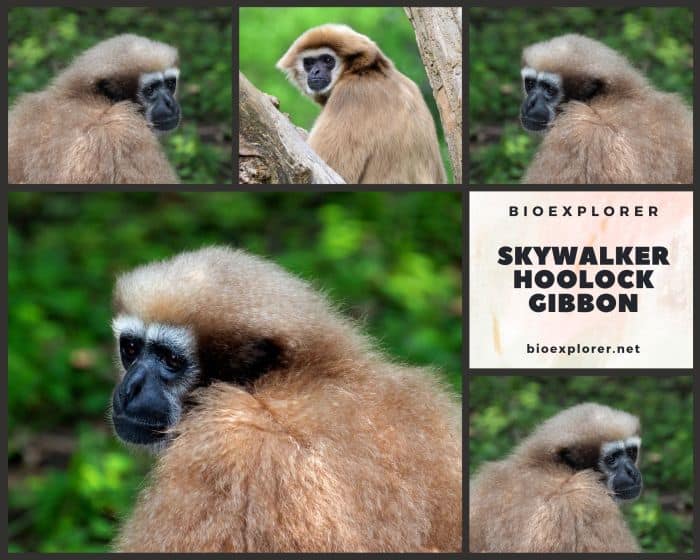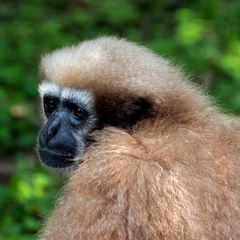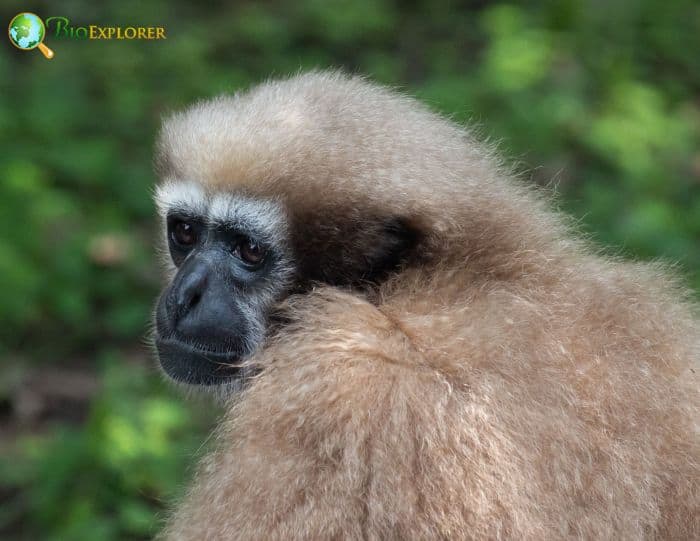
| Animalia | Primates | Hylobatidae | Hoolock | Hoolock tianxing |


- Common Names: Gaoligong Hoolock Gibbon, Skywalker’s Hoolock Gibbon
- Taxonomy Classification Year: 2017
- Monkey Size: 60 to 90 cm (23.6 to 35.4 in)
- Skin Color(s): Dark brown or yellowish
- Habitat: Forest, rainforest
- Diet: Omnivorous
- Native Countries: Myanmar, China
Gaoligong Hoolock Gibbon Distribution
Skywalker Hoolock Gibbon Characteristics

Skywalker’s hoolock gibbon[1], also known as the Gaoligong hoolock gibbon, is a primate of the Hylobatidae family.
- Hoolock tianxing is a hoolock gibbon that differs from other described hoolock species by combining external and dental characteristics.
- In adult males, the ventral coat is usually dark brown, and the dorsal coat has a brown overlay that is particularly evident in bright light.
- In addition, they have fine and well-separated eyebrows, and white hairs are absent in the suborbital region.
- The genital tuft is conspicuous, typically black or dark brown, with some white hairs that do not contrast with the color of the groin.
- In older animals, the genital tuft is paler and light brown in color. In adult females, coat color is usually yellowish but varies with age (yellowish-white to strawberry blonde).
- White hair is not usually present in the lateral orbital region or, if present, is not as prominent as in the eyebrows of the lateral orbital region.
Skywalker Hoolock Gibbon Facts
- The Skywalker hoolock gibbon is one of 3 species of hoolock gibbons and was first described in the American Journal of Primatology in January 2017.
- The species is named in honor of Luke Skywalker from the Star Wars franchise because the scientists who described the monkey are fans of the franchise.
- The specific name Tianxing is the pinyin transliteration of the Chinese terms “tiān” for “heaven” and “xíng” for “movement“. The name refers to brachiation, the gibbons’ primary mode of locomotion.
- Like other gibbons, hoolocks are arboreal and diurnal, brachiating through trees with their long arms and jumping, climbing, and leaping, sometimes using a bipedal gait.
- They sleep in trees, most often with their knees bent to their chests and their arms wrapped around themselves, and they usually sleep in the tallest trees and on hilltops or slopes.
Suggested Reading: Apes of The World
Cite This Page
APA7MLA8Chicago
BioExplorer.net. (2025, October 18). Skywalker Hoolock Gibbon. Bio Explorer. https://www.bioexplorer.net/animals/mammals/apes/skywalker-hoolock-gibbon/.
BioExplorer.net. "Skywalker Hoolock Gibbon" Bio Explorer, 18 October 2025, https://www.bioexplorer.net/animals/mammals/apes/skywalker-hoolock-gibbon/.
BioExplorer.net. "Skywalker Hoolock Gibbon" Bio Explorer, October 18 2025. https://www.bioexplorer.net/animals/mammals/apes/skywalker-hoolock-gibbon/.











